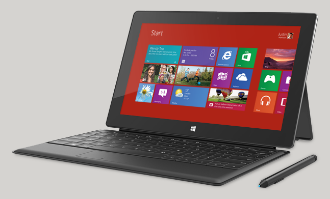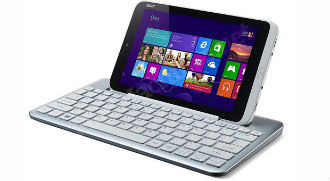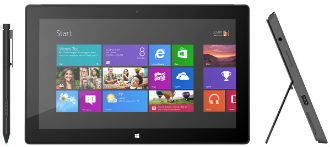 Although many in the industry have already written off Windows RT, Microsoft is giving it a shot in the arm with a second generation Surface tablet. Dubbed Surface 2, without the RT suffix, the new tablet is based on Nvidia’s Tegra 4 SoC and it boasts an 1080p display. The specs are hardly surprising, as the tablet was an open secret for months.
Although many in the industry have already written off Windows RT, Microsoft is giving it a shot in the arm with a second generation Surface tablet. Dubbed Surface 2, without the RT suffix, the new tablet is based on Nvidia’s Tegra 4 SoC and it boasts an 1080p display. The specs are hardly surprising, as the tablet was an open secret for months.
The biggest difference, however, is not under the bonnet. The Surface 2 will go on sale at Microsoft retail store and select third-party retailers in 22 markets. The first generation Surface RT was hampered by slow introduction and it took months to roll out in some markets. Microsoft clearly cannot afford to lose momentum on the Surface 2, which could be its last chance in the ARM-based tablet market, and the last chance for Windows RT 8.1. The Surface 2 is available in 32GB and 64GB flavours, starting at £359.
The Surface Pro 2 is a different beast, as it’s based on a beefier x86 chip and it runs Windows 8.1 Pro. It leverages Intel’s new Haswell low-power Core i5 processor and it is said to increase performance and deliver up to 60 percent more battery life than the original Surface Pro. Starting at £719, it’s not very cheap, but the Surface Pro 2 will be offered in 64GB and 128GB configurations with 4 GB of RAM and 256GB and 512GB configurations with 8 GB of RAM. That’s quite a lot for a tablet.
Microsoft also launched six new accessories, including new Touch and Type covers. In addition, there’s a Power Cover as well, which includes a battery and can extend battery life by up to 50 percent, but it costs a rather painful £165. There’s a new car charger with USB, along with the Arc Touch Mouse Surface Edition – although Windows 8.1 is designed with touch in mind, many legacy apps work a lot better with a proper mouse.
Both tablets are significant upgrades and go a long way towards addressing several shortcomings which plagued the first generation Surface tablets. The Surface Pro 2 in particular is a very impressive piece of kit, but it’s quite pricey. The Surface 2 on the other hand got a nice CPU bump along with a high-definition screen and on paper it looks a lot better than its predecessor. Sadly, Windows RT adoption remains relatively low and one tablet not enough to turn things around.







